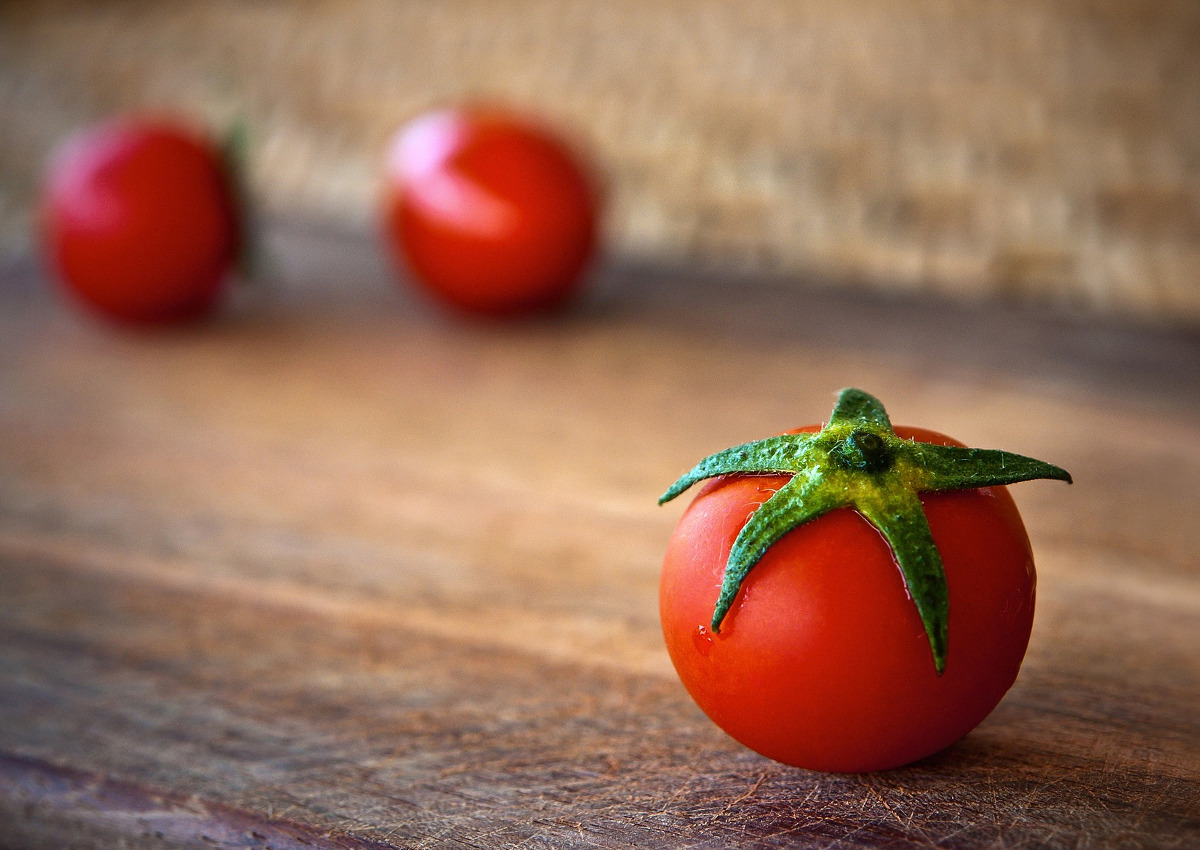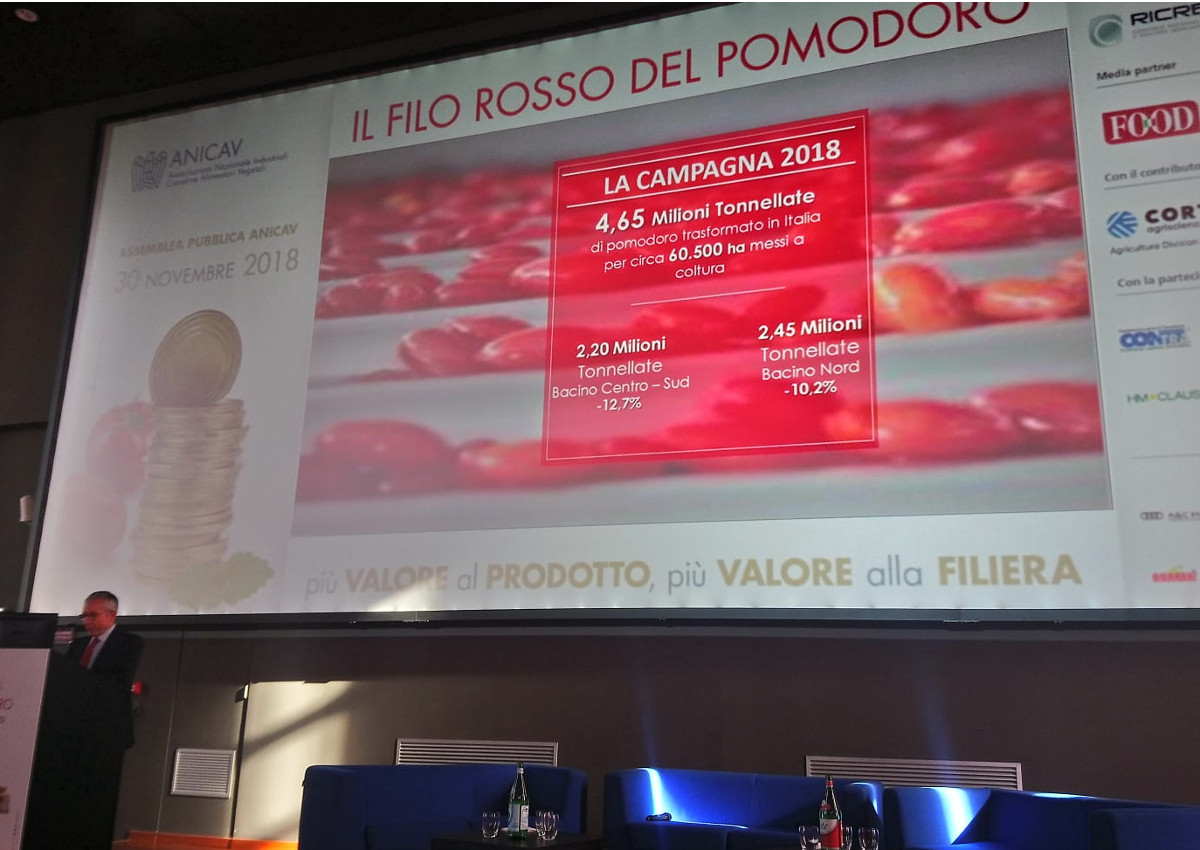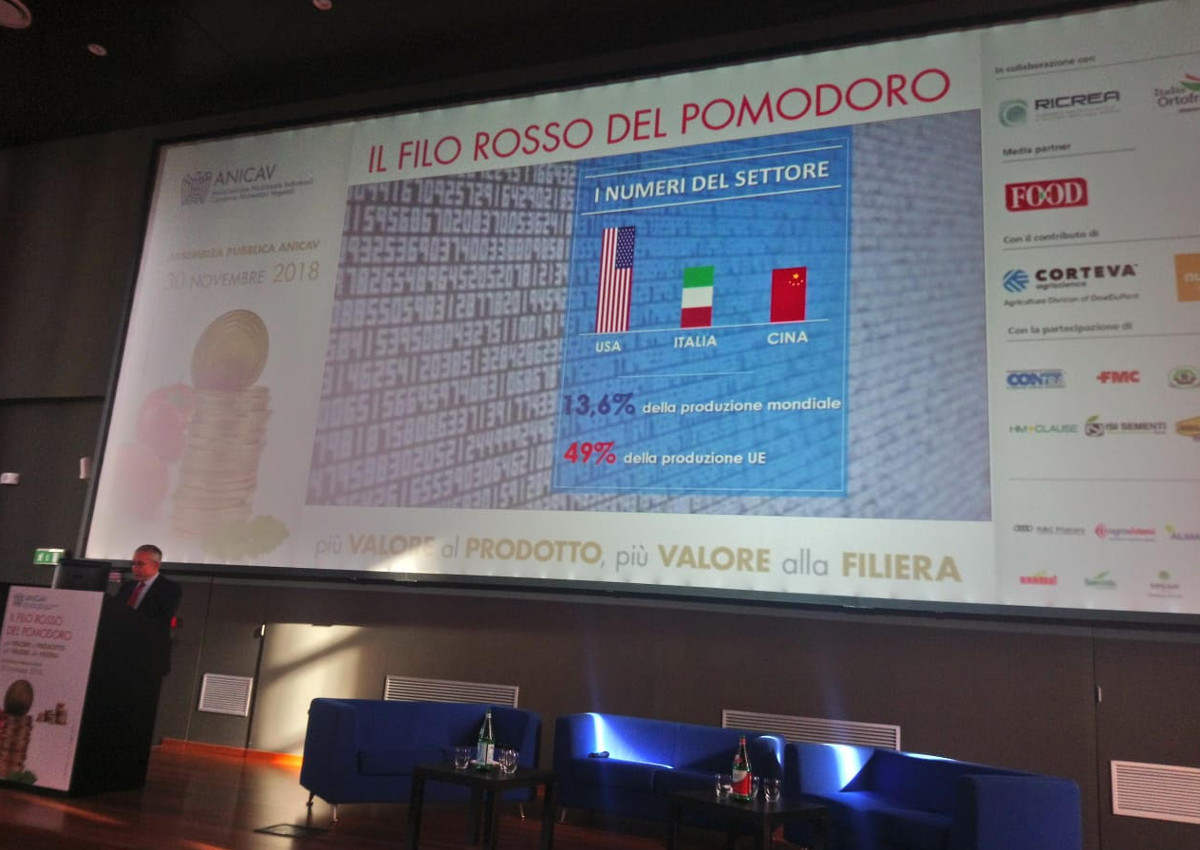
Processed Italian tomato is not, and will never be, a commodity. This is what was reaffirmed by Italian producers during the ‘Il filo rosso del pomodoro’ (the red line of tomatoes: in the pictures below) event organized today in Naples by ANICAV. Moreover, is ‘Pomodoro pelato di Napoli’ PGI coming? The will to promote the unique products available in our country is the reason why ANICAV has been committed for some time to the PGI certification of peeled tomatoes grown in the historically suitable area of Naples. “Given the situation this sector is in, establishing a protected Geographical Indication has become increasingly urgent – General manager of ANICAV Giovanni De Angelis confirms -. In the current commercial context, dominated by private labels, the possibility of increasing the value of individual brands is rather limited. It is therefore necessary to find a solution to increase the value of the product itself. A successful example is the balsamic vinegar from Modena”.

ITALIAN TOMATO EXPORTS…
Exports make up a key balance sheet item in the tomato derivatives sector. From January to June 2018, Italy exported a total of 1,031,117 tonnes of tomato preserves, up to 7.7%. Tomato puree, with a +26.56%, achieves the best performances: however, it should be remembered that it still represents a minority share in exports, with its 15%. The best-selling ‘pomodoro’ based products abroad are still peeled tomatoes and crushed tomatoes, and their volumes grow by +12.5%. The same cannot be said for products coming from China, with imports equal to 97,832 tonnes and a drop of -36%, therefore becoming the fourth country from which we import. On the other hand, imports from Portugal are on the rise (+119,33%).

… AND PRODUCTION
The positive trend of trade with foreign countries, however, should not lead us to believe that everything in this sector is proceeding in the right direction. There are many problems to tackle, starting with the production decrease. “In the last year – De Angelis points out – the hectares of land engaged in the cultivation of tomatoes have fallen by -6%, and the season will close with a decrease in agricultural production around -15%, not only due to the decrease in cultivated areas, but also to climatic adversities. This performance fall goes together with a drop in quality, which will lead to an increase in the amount of raw material used to reach the same quantitative standards. This means a decrease in industrial production of at least -20%”.
